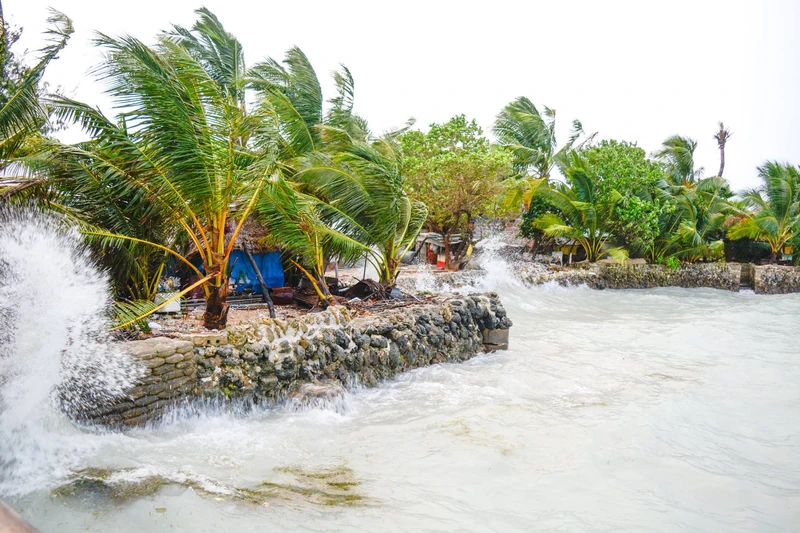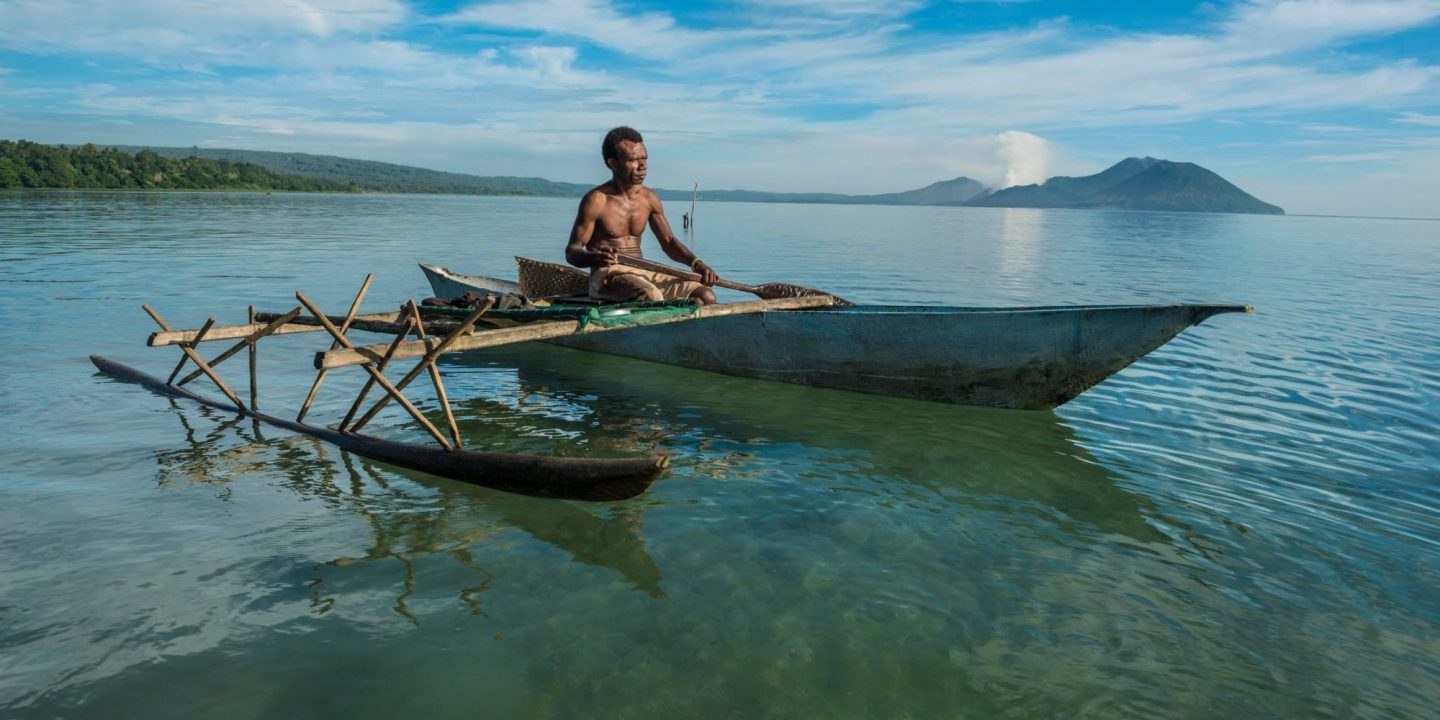Pacific women that are highly susceptible to climate change, disaster risks and natural hazards have excellent adaptive capacity, writes Belyndar Rikimani
A blog by Belyndar Maonia Rikimani
The Pacific is known to be one of the regions that is very vulnerable to climate change and climate-induced natural disasters. Today almost all the Pacific nations are battling the worst effects of climate change and COVID-19 in their communities. Many islands nations are experiencing first-hand the increasing impacts of climate change and the unexpected outbreaks of coronavirus in their communities as health facilities are overwhelmed with limited resources and human capacity to deal with multiple crises facing the Pacific region. The death rates are increasing daily from COVID-19 and climate-related events.
Also in the midst of this pandemic, one of the most powerful underwater volcano erupted in Tonga in mid-January generating tsunami and ashfall that was felt across five Pacific countries causing widespread damage. In Tonga, the tsunami and ashfall caused massive flooding, landslides, uprooted vegetation and homes depriving survivors from basic needs like food and clean water. This is the reality that women, young girls and children are dealing with in Pacific communities.
Earlier this month, the Intergovernmental Report on Climate Change (IPCC) Working Group II (WGII) released a report that highlighted that with all these climate crises, women are at the very forefront of climate change and its impact will disproportionately affect their health, safety and well – including young girls and children of the Pacific and all of the Global South. As described in the IPCC scenarios, climate change will really have massive impacts on food security, freshwater supply, urban and rural settlements will face a huge scarcity of resources for the population and these impacts will mostly affect women as many women in the Pacific are known to be the breadwinners of their families. A question that was posed by many after the release of this report was how will this affect the livelihood and vulnerability of women, young girls and children?
Clera Gore Rikimani who is a Local Climate Change Researcher and now the Senior Programmes Manager, Save the Children Solomon Islands have said, “In Solomon Islands, many women are really affected by the climate crisis and COVID-19. They are trying to provide their families with all the basic needs to sustain their families every day. There are some communities that are still not being supported by the government or received humanitarian aid from donors. Some communities that are in the outskirts of Honiara still have a large number of population that are still unvaccinated and majority of them are women and this has made it difficult for them to travel in town to settle their local produce”.
Rikimani added that, “Even though these crises were happening all at once, many women have become very creative and innovative in their marketing strategy to support their families and serve the communities in these struggling times. Many women have used the online platform to sell their local products and offer delivery services to customers by adhering to the COVID-19 safety protocols. This shows how resilient women are in critical situations”.
Mary Alalo who is the Project Coordinator for the Third National Communications Report Project ( TNC) and the First Biennial Update Report Project (FBUR) a project that is implemented by the Climate change Division of the Ministry of Environment, Climate change, Disaster Management & Meteorology, Solomon Islands agreed, “Women in highly vulnerable communities have adapted by practicing food preservation methods, crop diversification and planting crops that are more drought, flood and saltwater tolerant and women as house managers have done well by ensuring their families have food and water to drink including ensuring their children are kept safe from COVID-19”.
She added that, “Climate crisis and COVID-19 are making it more difficult for women, girls and children to access quality health care, access to quality schooling, access to clean water and sanitation, access to income-generating opportunities including limiting their capacity to improve their livelihoods.”
But she was encouraged by the fact that Pacific women have excellent adaptive capacity because they live in a region that is highly susceptible to climate change, disaster risks and natural hazards.
“Climate change is not a new concept, we have been living and breathing its impacts on our lives through the rising seas that brought in the high tides, through the heavy rains that affected our gardens, through the droughts that dried up our water sources, through the severe cyclones that damaged our houses, trees and livelihoods”.
Various studies have proven that women and girls respond well in times of crisis.
The Chief Conservation Officer who is the lead for the Protected Areas & Coral Triangle Initiative in the Solomon Islands, Agnetha Vave – Karamui endorsed that viewpoint that, “Women have inbuilt instincts and characters that foresee problems and in most times will try to prepare or mitigate for these impacts. Their curiosity for what will be done is always a suitable tool – they may want to find information from their spouses or their chiefs or others around them”.
Karamui shared a few examples of the adaptation measures that Pacific women are engaging in the Solomon Islands. Women are rotating food crops, seeking new areas for gardens, planting new crops that are more suitable to changing weather, diversifying crops in their food gardens and engaging in multiple income-generating incomes.
“It has been found that all these adaptive measures have really suited their context of leadership by giving assistance and mobilising community support to their leaders and community members to be calm in emergency situations.
Also the National Coordinator of the Australia Pacific Climate Alumni Network (APCAN) Gaylyn Puairana shared that women, young girls and children bear the brunt of climate change. She also echoed a fundamental sentiment that there is no climate justice without gender equality. She emphasised that there is a need for women to be given platforms to demonstrate their ideas on how they can bring about change in their communities.
“Therefore, it is very important to ensure there are equal spaces and resources for Pacific women to participate in climate change decision making and climate action at all levels. Because Climate Justice is not possible without having women’s equal participation and involvement. And there needs to be an urgent need to integrate gender-responsive frameworks into implementing policies to address climate change. Lastly, in order to move forward, there needs to be a strong recognition of Gender and Climate Change in the Pacific as many Pacific women are at the frontline of being affected by the rising climate change impacts, said Puairana.
About the Author:
Belyndar Maonia Rikimani is a Climate Activist and a One Young World Ambassador from the Solomon Islands. She is a final year Law student at the University of the South Pacific and is a member of the Pacific Students Fighting Climate Change (PISFCC).
The views expressed in this blog belong to the writer and does not necessarily represent the views of Pasifika Environews.




